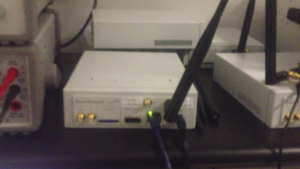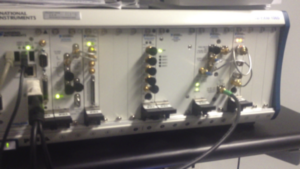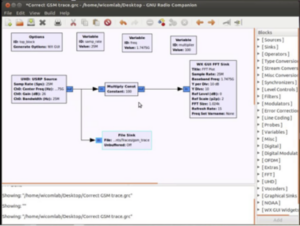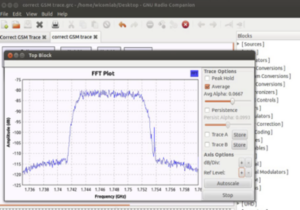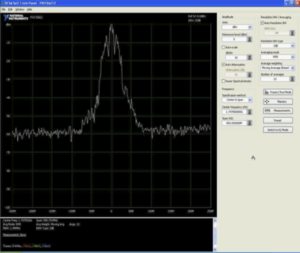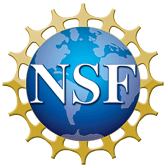
Collaborative Research: SWIFT: Data-Driven Learning and Optimization in Reconfigurable Intelligent Surface Enabled Industrial Wireless Network for Advanced Manufacturing (supported by NSF)
Project Number: CNS-2128482
Duration: Oct 2021 – Sep 2024
PI: Lijun Qian, Ph.D.
Department of Electrical & Computer Engineering
Roy G. Perry College of Engineering
Prairie View A&M University
Prairie View, TX 77446
Project Summary:
The next generation of smart factories needs a high-quality and reliable wireless network that can support extensive information exchange between coexisting distributed sensors and machines. However, traditional wireless network techniques cannot be directly applied to manufacturing factories due to their stringent latency and reliability requirements in confined factory spaces, uncertain wireless environment, unknown disturbance or interference, as well as security concerns. On the other hand, the emerging reconfigurable intelligent surface (RIS) technique is a promising solution to significantly enhance the quality (e.g. latency reduction, reliability improvement, etc.) of traditional wireless networks and provide security, especially under a complex dynamic wireless environment such as manufacturing factories. Therefore, the goal of this project is to provide a novel framework for hardware-driven online learning and optimization of RIS-enhanced industrial wireless networks. To achieve this goal, the proposed research will provide critical components in facilitating the reliable and optimal design of industrial wireless networks for both stationary and mobile users and fostering their adoption. The research is also complemented by a comprehensive educational plan including curriculum development, lab enhancements, as well as involving undergraduate and graduate students in research. Diverse outreach activities have been planned to engage K-12 and underrepresented students from two HBCUs, one MSI, and other institutions.
This research will develop foundational analytical and experimental approaches for reconfigurable intelligent surface (RIS) hardware-driven cross-layer optimization and data-enabled online learning algorithm development. The project will provide several novel contributions, including 1) A new type of hardware-driven cross-layer optimization for the RIS-assisted industrial wireless network under unknown disturbance, 2) A novel real-time data-enabled learning approach that can solve the complex cross-layer optimization under harsh constraints, 3) A robust and computationally efficient learning framework that can optimize the large scale RIS-enhanced wireless network in a distributed fashion, and 4) Design and fabrication of a RIS unit that supports a dynamic beam steering capability, as well as a hardware testbed for evaluating the developed RIS-enhanced industrial wireless network in practical settings. Moreover, this project will lead a new direction in industrial wireless network optimization, machine learning, and resilient computing and further pave the way for real-time learning-based optimization development and implementation. The proposed research will contribute to future wireless revolution and advanced manufacturing which are of national priority.
News:
One of our graduate students, Mr. Tariq Abdul-Quddoos participated in the 2023 POWDER-RENEW Mobile and Wireless Week and won third prize with his project titled “Passive Reflective Surface” out of 22 participating project teams: https://www.powderwireless.net/news#news-jan28-2023
Results:
I. Publications
This material is based upon work supported by the National Science Foundation under Grant No.2128482.
Any opinions, findings, conclusions, or recommendations expressed in this material are those of the author(s) and do not necessarily reflect the views of the National Science Foundation.
Journal papers:
- Yang, Bo and Cao, Xuelin and Huang, Chongwen and Yuen, Chau and Di Renzo, Marco and Guan, Yong Liang and Niyato, Dusit and Qian, Lijun and Debbah, Merouane “Federated Spectrum Learning for Reconfigurable Intelligent Surfaces-Aided Wireless Edge Networks”, IEEE Transactions on Wireless Communications, 2022.
Conference papers:
- Y. Zhang, H. Xu, L. Qian (2023). “Joint Optimal Placement and Dynamic Resource Allocation for multi-UAV Enhanced Reconfigurable Intelligent Surface Assisted Wireless Network,” The Proceedings of IEEE ROBOCOM 2023 (Best Paper Award).
- Y. Zhang, A. Eroglu, B. Yang, L. Qian, H. Xu (2023). “Reinforcement Learning based Optimal Dynamic Resource Allocation for RIS-aided MIMO Wireless Network with Hardware Limitations,” International Conference on Computing, Networking and Communications (ICNC 2023).
- K. Mensah-Bonsu, B. Yang, A. Eroglu, H. Xu, L. Qian (2023). “Polarization Analysis of Reflectarray Unit Elements Using Characteristic Modes,” 2023 IEEE International Symposium on Antennas and Propagation and USNC-URSI Radio Science Meeting (USNC-URSI).
- K. Mensah-Bonsu, B. Yang, A. Eroglu, H. Xu, L. Qian (2022). “Equivalent Circuit Model for Varactor-Loaded Reconfigurable Intelligent Surface”, IEEE International Symposium on Antennas and Propagation and USNC-URSI Radio Science Meeting (IEEE AP-S/URSI 2022).
II. Setup of the testbed and RF data collection
1) Setup of the testbed
- Collection of Radio frequency (RF) signals over a wide range of spectrum requires receiver units that can be configured to scan a range of frequency bands within 50MHz-8GHz. The modular design of Universal Software Radio Peripheral (USRP2) allows extension of the basic system using various daughter boards for RF transmitters and/or receivers at different frequency bands. USRP2 also features two 400MS/s 16-bit digital to analog converters and is capable of processing signals up to 100MHz wide.
2) Experimental results and RF traces
- Coming soon.
III. Source codes and software tools
1) Source codes:
- Coming soon.
2) Software tools:
- GNUradio: http://gnuradio.org
- NI LabVIEW: http://www.ni.com/labview/
Collaborators:
- Dr. Hao Xu’s group at UNR: UNR Group
- Dr. Binbin Yang and Dr. Abdullah Eroglu’s group at NCAT: NCAT Group 1 and NCAT Group 2
Contact information:
Office: NENR Building Room 332Phone: (936) 261-9908
Fax: (936) 261-9930
E-mail: Lijun Qian
Last Modified: August 2023

